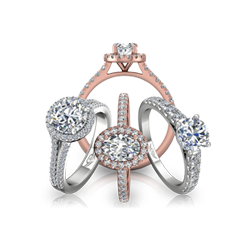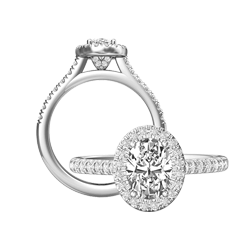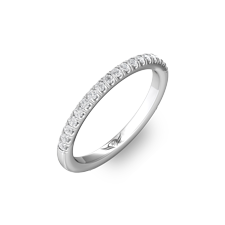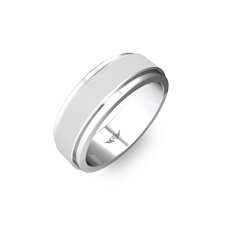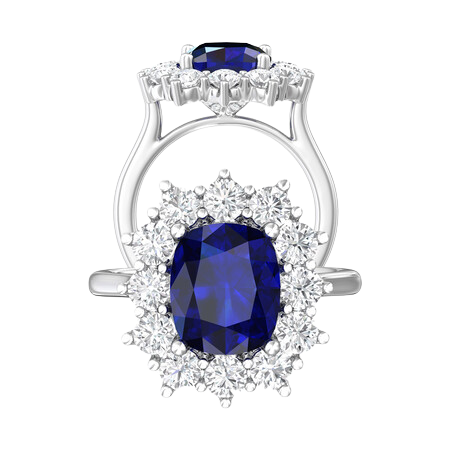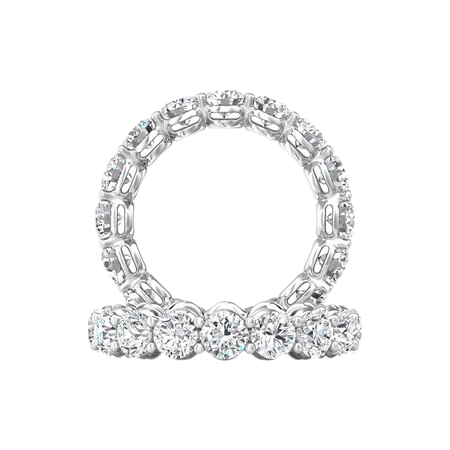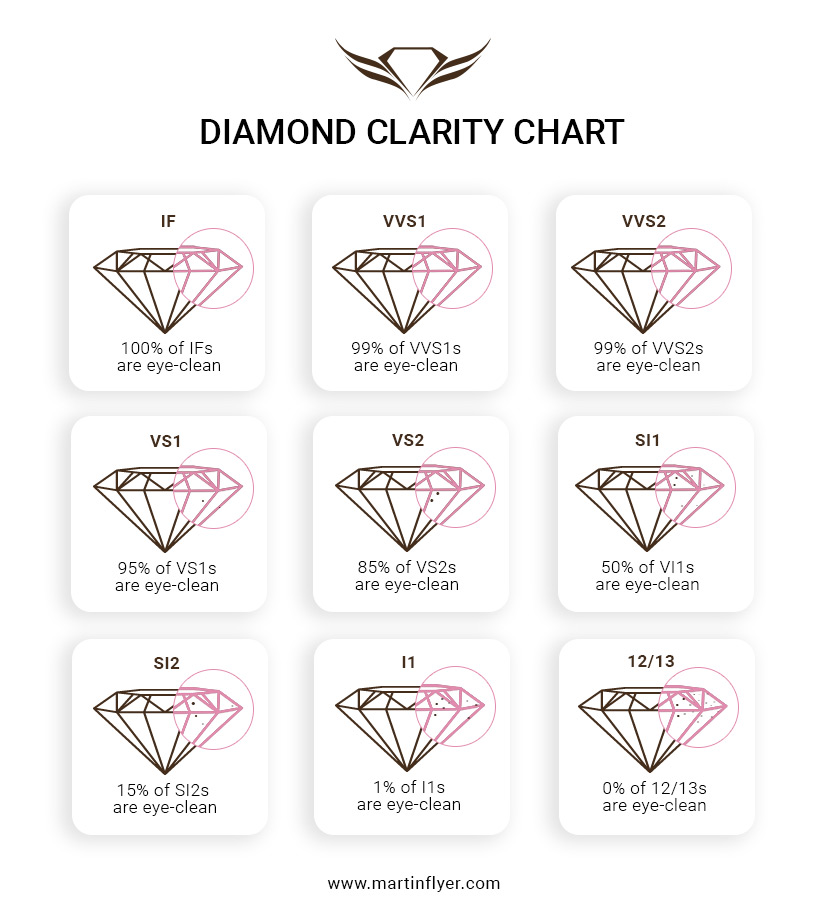Not everyone who wants to buy a diamond engagement ring knows everything about diamonds. It is wise to take a note of the important 4Cs: cut, color, clarity, and carat weight. Out of the 4Cs, it is only the carat weight that many people pay close attention to. But did you know that Carat weight and size are related, but they are not the same thing? Two identical stones of the same size and carat weight can look completely different depending on the cut. This blog will explore more on that aspects for a better and clearer buying experience.
The importance of a Diamond Carat
 A diamond’s carat weight is largely a matter of personal preference, but it has a direct impact on the price of the stone. Of the 4Cs, the carat weight is often the most important factor in determining price. The weight of a diamond is measured in carats, and a metric carat is equal to 200 milligrams.
A diamond’s carat weight is largely a matter of personal preference, but it has a direct impact on the price of the stone. Of the 4Cs, the carat weight is often the most important factor in determining price. The weight of a diamond is measured in carats, and a metric carat is equal to 200 milligrams.
The carat weight of a diamond is only as crucial as you need it to be. Carat weight is an important consideration if a large stone is a top priority for you. People who don’t believe that a larger stone is important may consider other characteristics of the diamond than its carat weight.
Carat Influences the cost of a Diamond
If all other factors of the 4Cs are equal (cut, clarity, and color), the price of a diamond will rise as the carat weight increases. When it comes to diamonds, for many, the size matters. The larger the diamond, the more sought-after and even rarer. The latest trend shows it. However, the other three Cs can have a significant impact on the value of two identically sized diamonds.
To put it another way, the carat weight of a diamond is an important factor in determining its price, but it is not the only one. Even if a diamond is large in carat weight, its value will plummet if its clarity and color aren’t up to snuff.
Carat Influences the size of a Diamond
When it comes to understanding the carat weights, many people will believe that the carat weight is equal to the diamond’s size. The diamond’s weight is measured in carats, but the cut has a greater impact on the stone’s overall size than the carat weight.
In comparison to a smaller diamond of the same carat weight and perfect cut, a higher-carat diamond with a poor cut may appear smaller. In other words, a one-carat round diamond is not half the size of a two-carat round diamond. If the diameter of a one-carat round is 6.4mm, the diameter of a two-carat round would be 8mm.
A diamond clarity is the second most crucial of the 4Cs, affecting both its visual appearance and its long-term viability.
Inclusions: There are two distinct types of flaws that affect the clarity of a diamond; inclusions (also known as internal characteristics) and blemishes (also known as external characteristics). Because of their inclusions and blemishes, diamonds with low clarity grades are more prone to cracking and chipping.
Diamonds naturally contain a variety of inclusions, such as pressure cracks, bubbles, and small mineral deposits, which are the most common. Chips, scratches, and pits form during the cutting or polishing of a diamond and are the most common causes of blemishes.
People going diamond shopping may find it difficult to judge the diamond’s clarity.
Professional gemologists use a 10x magnification to examine a diamond’s clarity for blemishes and inclusions.
Clarity of a Diamond
As we know, diamonds are carbon-based. We have the most concentrated form of carbon available to us. The formation of a natural diamond takes millions of years as a result of the extreme heat and pressure faced by the diamond in the Earth’s mantle.
Flaws or imperfections are common in most naturally occurring diamonds. The term “blemishes” (as stated above), refers to a variety of scratches and inclusions visible on the diamond’s surface.
During the process of its formation, inclusions are internal features that are stuck in the material. Natural blemishes are the scratches and inclusions on diamonds.
These characteristics distinguish these gemstones from others. Diamonds are extremely rare to come across in an ideal state. This makes them extremely pricey.
So what is the connection between blemishes, inclusions, and a diamond’s clarity? In layman’s terms, the clarity of a diamond refers to its cleanness. It is a metric used to grade a diamond’s visual appearance.
Flaws, Clarity, and Price
While buying a piece of jewelry, remember that clarity is inversely proportional to flaws. So the higher the diamond’s clarity grade, the fewer inclusions it will have. The clarity of the stone impacts the value of a diamond. A diamond with a higher clarity would be more expensive than one with lower clarity, even if they are of the same cut, carat weight, and color. Truly, most imperfections and flaws cannot be seen with the naked eye.
The clarity of a diamond is affected by a variety of factors. The inclusion’s quantity, color, and size are all important considerations. Depending on how visible the inclusion is, the clarity may also change. Similarly, a diamond’s clarity is also determined by the location from where it was sourced.
Understanding the Diamond Clarity Chart
Each diamond is a one-of-a-kind creation. Their flaws, on the other hand, are a common occurrence. Magnifications up to 10x are used by gemologists to inspect diamonds because the flaws are so tiny. They do this while keeping the diamond in a face-up direction. The clarity grade cannot be determined if any blemish or inclusion is not visible when looking at the diamond from the top. Consequently, experts use loupes or microscopes to examine the inclusions’ sizes and shapes.
Using a 10x magnification, experienced graders can discern various aspects of clarity. The locations of the inclusions are mapped by skilled graders and are referred to as “plots.” They help in determining the value of each stone. Since the internal pattern of each diamond is unique, as a result, no two diamonds are the same. Plots of diamonds are like fingerprints, allowing us to identify each unique diamond.
A diamond clarity chart is used by gemologists to grade the results of the analysis. The following are the different grades and their characteristics:
 What Clarity Rating Should You Choose?
What Clarity Rating Should You Choose?
There are a few things to keep in mind when looking for a stone with the appropriate clarity rating. Are you looking for a diamond that has no inclusions? Would you be able to accept a small amount in your diamond? Then an FL-IF grade or any VVS grade diamond would be your best pick. But keep in mind that a high-quality diamond of that grade will also come with the highest price tag.
VS-quality diamonds (high-quality stones) don’t cost as much as those with a premium clarity rating. However, if you’re on a budget, an SI-rated diamond is a good option. In that case, you must make sure that the inclusions are not obvious. Choose an SI3 or I1 diamond if you want a larger carat weight for a lower price.
When you’re buying a diamond, be sure to look at the stone’s flaws and inclusions.
Inclusions closer to the side facets have less impact on the visual appearance than inclusions in the center.
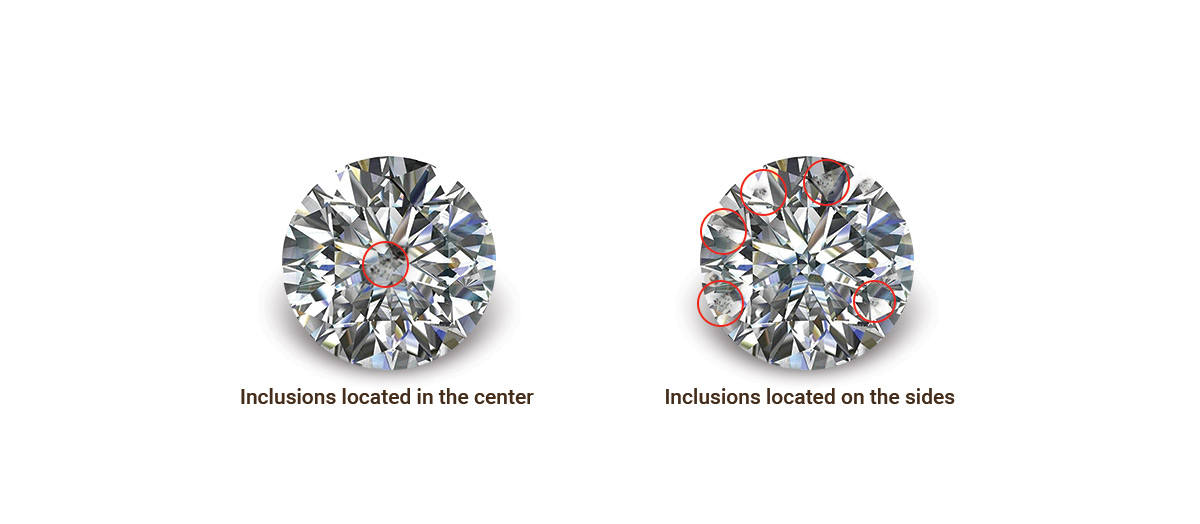 How to Buy a Diamond Without Making the Clarity Mistake
How to Buy a Diamond Without Making the Clarity Mistake
It’s easy to make mistakes when purchasing a diamond. A diamond with an extremely high clarity grade is seen as a good investment. Choose the level of clarity that best meets your requirements. Do not buy a flawless diamond simply because you like the way it appears. Tiny flaws that are barely noticeable can be found in many more affordable stones. The physical beauty and worth of a diamond are unaffected by such tiny flaws. Take a decision that will benefit you in the long run.
As a result, the next time you’re looking to buy a diamond ring or other jewelry, don’t simply go for the most eye-catching one you can find. You must inquire about the clarity of stones used in the jewelry and make sure to check the clarity chart before making any decision.
Happy shopping!
